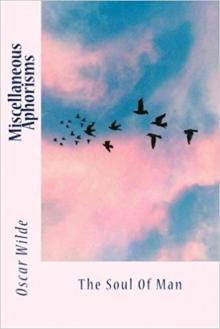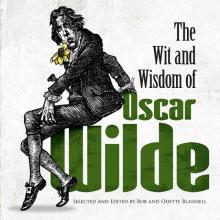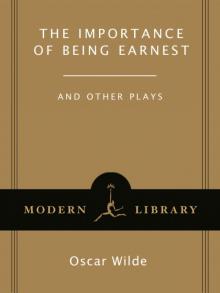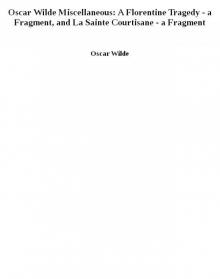- Home
- Oscar Wilde
The Short Stories of Oscar Wilde
The Short Stories of Oscar Wilde Read online
THE SHORT STORIES of OSCAR WILDE
AN ANNOTATED SELECTION
EDITED BY
NICHOLAS FRANKEL
CAMBRIDGE, MASSACHUSETTS
LONDON, ENGLAND
2020
Copyright © 2020 by the President and Fellows of Harvard College
ALL RIGHTS RESERVED
Jacket design by Gabriele Wilson
Jacket illustration © Yuko Shimizo
978-0-674-24867-0 (cloth)
978-0-674-25037-6 (EPUB)
978-0-674-25038-3 (MOBI)
978-0-674-25039-0 (PDF)
The Library of Congress has cataloged the printed edition as follows:
Names: Wilde, Oscar, 1854–1900, author. | Frankel, Nicholas, 1962– editor.
Title: The short stories of Oscar Wilde : an annotated selection / Oscar Wilde ; edited by Nicholas Frankel.
Description: Cambridge, Massachusetts : Harvard University Press, 2020. | Includes bibliographical references.
Identifiers: LCCN 2020018204
Classification: LCC PR5812 .F73 2020 | DDC 823/.8—dc23
LC record available at https://lccn.loc.gov/2020018204
For my amazing sons,
Max, Theo, and Oliver
“The aim of perfection is youth”
CONTENTS
INTRODUCTION
A NOTE ON THE TEXTS
Lord Arthur Savile’s Crime (1887)
Lady Alroy (1887)
The Model Millionaire (1887)
The Happy Prince (1888)
The Selfish Giant (1888)
The Nightingale and The Rose (1888)
The Birthday of the Little Princess (1889)
The Portrait of Mr. W. H. (1889)
The Fisherman and His Soul (1891)
APPENDIX
Extracts from the Extended Version of “The Portrait of Mr. W. H.” (unpublished in Wilde’s lifetime)
FURTHER READING
ILLUSTRATION CREDITS
ACKNOWLEDGMENTS
INTRODUCTION
· · · OSCAR WILDE WAS A BORN STORYTELLER. “I cannot think other than in stories,” he told his friend André Gide, nine years before his death at the age of forty-six.1 Wilde was brought up on the Irish legends and folktales that his parents—Celtic Revivalists both—gathered into their books Irish Popular Superstitions and Ancient Legends, Mystic Charms and Superstitions of Ireland.2 Many of these stories had first been told to Wilde’s father, Sir William, an eminent surgeon, by poor patients in his Dublin surgery in lieu of payment.3 Storytelling ran deep in Wilde’s family. His great-uncle Charles Maturin authored Melmoth the Wanderer, a masterpiece of Gothic fiction much admired by Byron, Balzac, and Lovecraft, among others, that influenced Wilde’s own Picture of Dorian Gray. His mother’s writings, too, are full of stirring narratives: her retellings of such Irish legends as “The Priest’s Soul,” “The Fairy Child,” and “The Fairy Changeling” strongly influenced Wilde’s fiction, while her translation of Meinhold’s Sidonia the Sorceress proved a key inspiration to the Pre-Raphaelites and was Wilde’s “favorite romantic reading when a boy.”4
Wilde’s family background and Irish roots do much to explain the excellence of his stories—nine of the best of which are gathered here—not least their preoccupation with magic and the uncanny. “A deep-rooted belief in the supernatural … and an extensive superstitious creed has, from the earliest times, belonged to the Celtic race,” Wilde’s father wrote in his preface to Irish Popular Superstitions, and “we cannot, therefore, wonder that among the … inhabitants of a large portion of Ireland, a belief in the marvellous should linger even to the present day.” This putatively Irish credence in the supernatural is reflected, not uncritically, in many of Wilde’s short stories, just as it is in his only novel, The Picture of Dorian Gray.5 As with the magic portrait that gives its name to Wilde’s most famous fiction, the world of inanimate and brutish things is replete with hidden spirit: a statue speaks and weeps, a sundial forgets to mark the time, rose trees disdain the nightingale, the sea mourns the death of a mermaid, and small talkative birds possess greater dignity and heroism than all but a few of Wilde’s humans.6 In “The Fisherman and His Soul,” the magical separation of the hero from his own soul is enabled by a witch whose red hair (referenced five times) and love of dancing mark her allegiance with the sidhe, or fairies, believed to inhabit the Irish landscape. Even the action of “Lord Arthur Savile’s Crime,” a silver-fork fiction set in Wilde’s own day featuring a cast of aristocratic characters similar to those who populate Wilde’s society plays, is driven by Lord Arthur’s uncanny sense of predestination. (The story is published here with its original tongue-in-cheek subtitle, “A Study of Cheiromancy,” in which Wilde refers facetiously to the art of palm reading as cheiromancy, perhaps in order to highlight its pseudoscientific pretensions.)7 To be sure, we follow Lord Arthur’s story with a bemused suspicion that he believes too foolishly in the inevitability of his own fate. Many readers are bound to ask how such a sophisticated man-about-town could believe in the prognostications of a quack “cheiromantist” or palm reader. But the same question might be asked of Wilde himself: in mid-1885, shortly after the birth of his first child, Wilde asked his friend the polymath and self-described cheiromantist Edward Heron-Allen to “cast the child’s horoscope for us,” and ten years later, just before proceeding with his ill-fated libel suit against the Marquess of Queensberry, he consulted the fashionable medium Mrs. Robinson, placing all too much faith in her prophecy of “complete triumph.”8 Such skepticism is eventually shaken by the story’s startlingly unexpected denouement.
If Wilde’s stories draw their magic and superstition from Irish traditions, those traditions also do much to explain the stories’ abundantly oral or “spoken” quality. In some of them, the voice and personality of the teller assume a central place: “One afternoon I was sitting outside the Café de la Paix … when I heard someone call my name,” begins “Lady Alroy”; similarly, “The Portrait of Mr. W. H.” begins “I had been dining with Erskine in his pretty little house in Birdcage Walk.” In others, the action involves characters such as the fisherman’s soul (“The Fisherman and His Soul”) or the little swallow (“The Happy Prince”) who are themselves good storytellers; while in still others the voice and personality of the teller remain merely implied. Although Wilde does not use the first-person narrative voice, what reader does not feel Wilde’s own urbane presence in the opening paragraphs of “Lord Arthur Savile’s Crime,” with their arch description of Princess Sophia “talking in bad French at the top of her voice”? Or in the witty epigrams about the idle rich with which “The Model Millionaire” begins: “Unless one is wealthy there is no good in being a charming fellow. Romance is the privilege of the rich, not the profession of the unemployed”?9
But whether voiced in the first-person or not, “traces of the storyteller cling to a story the way the handprints of the potter cling to a clay vessel,” as Walter Benjamin observed, and in the case of Wilde’s stories these traces owe much to Wilde’s Irish roots.10 “The Irish race were never much indebted to the written word,” Lady Wilde writes in her preface to Ancient Legends; Ireland has been called “the most oral culture in Western Europe, a culture which retained primary orality … well into the twentieth century.”11 According to W. B. Yeats, Wilde was “the greatest talker of his time” and “talked as good Irish talkers always do—though with a manner and music that he had learned from Pater or Flaubert.” For André Gide, “Wilde did not converse: he narrated.… He did not stop narrating. He narrated gently, slowly, his very voice was wonderful.” Yeats and Gide are among numerous friends of Wilde whose memoirs tell us that his
stories—many of which he recounted orally to spellbound listeners long before he wrote them down for publication—are for all their brilliance only distant echoes of his speech.12 The listener was their first audience, and according to Yeats “the further Wilde goes in his writings from the method of speech, from improvisation, from sympathy with some especial audience, the less original he is, the less accomplished.” Wilde’s 1888 collection The Happy Prince and Other Tales (which includes “The Selfish Giant” and “The Nightingale and The Rose,” reprinted here along with the title story) is charming and amusing, says Yeats, because Wilde told its stories, and “The Fisherman and His Soul” has “so good a story that I am certain that he told it many times.” Yeats’s conjecture is partly confirmed by Wilde’s youngest son, Vyvyan Holland, who, in his moving memoir Son of Oscar Wilde, tells us that when Wilde grew tired of playing and romping with his young children, he would “keep us quiet by telling us fairy stories or tales of adventure, of which he had a never-ending supply.” There were tears in Wilde’s eyes when he told his sons the story of “The Selfish Giant,” Holland recounts, and although the story cannot have been composed expressly for Wilde’s children, who were one and nearly two years old when “The Selfish Giant” was first published, Wilde’s delight in the telling of it is implicit in Holland’s account.
Holland’s recollections beg the question for whom Wilde’s stories were first written. Five of the stories gathered here were first published in late-Victorian periodicals designed for adult readers—in the Court and Society Review, The World, Blackwood’s Magazine, and Paris Illustré—where they were framed by society gossip, reportage, or commentary on current events.13 Wilde was an accomplished journalist at the time of their publication—he was not yet taken seriously as an imaginative author and had written none of the plays on which his literary reputation today partly rests—and he likely saw his first forays into fiction as an extension of his journalistic career.14 These five stories had a far wider circulation among magazine-reading adults in Wilde’s day than they did when, with one significant exception, they were republished in book form in 1891.15 They are presented here under their original titles and in the form in which Wilde first published them.
But this does not settle the question of audience, even in the case of stories that found their earliest readership among adults. “The Birthday of the Little Princess,” for instance, first published in the international weekly Paris Illustré in 1889 and better known today under the title “The Birthday of the Infanta,” given it when republished in Wilde’s 1891 story collection A House of Pomegranates, is now often understood as a story written for children, in part because of its perceived debts to fairy tales by Andrew Lang and Hans Christian Andersen.16 However, Wilde himself—who thought it “in point of style … my best story”—said that in writing it he “had about as much intention of pleasing the British child as … of pleasing the British public.” The story should be judged as “the prose of an artist,” he proudly told a newspaper whose reviewer complained that the language of the stories in A House of Pomegranates was too advanced for a child.
Similarly, many early readers approached Wilde’s first collection of stories, The Happy Prince and Other Tales—none of which had appeared previously in periodicals—as if it were intended primarily for children. To some extent they were right. “The Happy Prince” and “The Nightingale and The Rose” unquestionably bear the influence of Hans Christian Andersen, as the annotations to the present edition show, and Wilde conceded early on to W. E. Gladstone that the collection was “really meant for children.”17 Moreover, the volume was illustrated by Walter Crane, a well-known skilled illustrator of children’s books, with headpieces and tailpieces by George Jacomb-Hood, who would soon go on to co-illustrate the first of Andrew Lang’s fairy books. However, Wilde purportedly began composing “The Happy Prince” in late 1885 in the rooms of a Cambridge undergraduate with whom he was briefly in love, and the story was probably finished a year later, around the same time as “Lord Arthur Savile’s Crime.”18 Like that story, it was intended for magazine publication. According to Wilde, it “lingered in the manuscript chest” of the English Illustrated Magazine for eighteen months before it eventually appeared as the title story to The Happy Prince and Other Tales in May 1888.19 Furthermore, if Hans Christian Andersen’s influence is palpable, “The Happy Prince” and “The Nightingale and The Rose” engage critically with the romanticism driving Andersen’s works to suggest that life is harsh, unjust, and inhospitable to love. Like “The Birthday of the Little Princess” and “The Fisherman and His Soul,” they possess stark, tragic endings that sit uneasily with adults and children alike. The involvement of Crane and Jacomb-Hood, finally, can be attributed to their shared political and artistic affinities with Wilde. Wilde saw both artists as fellow-aesthetes, and he counted Jacomb-Hood as a personal friend. He commended Crane’s art for “its complete subordination of fact to beauty of effect,” and he praised Jacomb-Hood for the “delightful” designs with which in 1887 he adorned a new translation of Aucassin and Nicolette published by David Nutt, the same firm that would publish The Happy Prince and Other Tales one year later.20
A House of Pomegranates (London: James R. Osgood McIlvaine, 1891). Title page, designed by Charles Ricketts.
We should not assume that a large and dedicated children’s market existed for fairy tales when The Happy Prince and Other Tales was first published. According to Roger Lancelyn Green, Andrew Lang’s biographer, by 1888 fairy tales “had almost ceased to be read in British nurseries, and the novel of child life, the stories of Mrs. Ewing, Mrs. Molesworth, and L. T. Meade were the only fare.” In The Child and His Book, after noting the popularity of fairy tales among earlier generations of Victorian child readers, Mrs. E. M. Field commented, “At the present moment the fairy-tale seems to have given way entirely in popularity to the child’s story of real life, the novel of childhood.”21 Not until Andrew Lang’s immensely popular “colored fairy books”—the first of which, The Blue Fairy Book, appeared at Christmas 1889, some eighteen months after Wilde’s The Happy Prince—did a resurgent market develop for fairy tales aimed principally at children, although Wilde’s fairy tales seem not to have benefited as a result in his own lifetime. Certainly, the first edition of The Happy Prince sold out quickly and a second edition was printed early in 1889. However, in 1891 Wilde anxiously asked his publisher, “Is there any sale for my Fairy Stories still?”; three years later he complained that sales averaged only 150 copies per year.22 A third edition would not be printed until 1902. When the collection first appeared, moreover, one anonymous reviewer observed that its “dominant spirit” was one of “bitter satire,” that it contained elements that children would find hard to digest, and that while adults would find much to admire in the book, “no child will sympathize at all with Mr. Wilde’s Happy Prince.”23 Wilde himself told one correspondent, finally, that the stories in the Happy Prince were written “not for children, but for childlike people from eighteen to eighty.”24
As Wilde’s own remarks imply, his hopes for his stories were complex and even contradictory, much like the stories themselves. He was keen that The Happy Prince should be reviewed in The Century Guild Hobby Horse, the leading organ of the Arts and Crafts movement, as well as the Irish Times, and also that it should be advertised in Punch and The World, both magazines aimed at adults. As Ian Small notes, he also bought at least thirty-two copies of The Happy Prince to give to friends and acquaintances.25 Among those to whom he sent a copy was the Liberal prime minister W. E. Gladstone. In a note accompanying the book, Wilde expressed his pleasure in presenting it “to one whom I, and all who have Celtic blood in their veins, must ever honour and revere, and to whom my country is so deeply indebted.”26 The compliment suggests that Wilde’s gift was motivated by Gladstone’s work furthering Home Rule for Ireland, the country to which Wilde here claims allegiance. He also sent signed copies of The Happy Prince to John Ruskin, the art and social critic, and
to the librarian of Toynbee Hall, a pioneering social settlement in London’s East End. But any implication that these gifts—or still more, the stories in the collection itself—were politically motivated must contend with Wilde’s comment to Gladstone that the collection was “really meant for children” or his dimly expressed hope that Ruskin might find “charm or beauty” in it.27 More purely personal motives drove the gift of a copy to Florence Stoker (née Florence Balcombe), whom Wilde had courted in his youth but who had since married his fellow Irishman Bram Stoker. The gift was accompanied by a note expressing the hope that she would “enjoy Crane’s pretty pictures and Jacomb Hood’s designs” and concluding “best regards to Bram.”28 Hedging his bets, he told the poet George Kersley that the book was “meant partly for children, and partly for those who have kept the childlike faculties of wonder and joy, and who find in simplicity a subtle strangeness.”29 A franker acknowledgment of a social agenda is found in Wilde’s July 1888 remark to Leonard Smithers that the title story “is an attempt to treat a tragic modern problem in a form that aims at delicacy and imaginative treatment,” a characterization Wilde echoed six months later in his comment to the American writer Amélie Rives Chanler that “my fairy tales … are an attempt to mirror modern life in a form remote from reality—to deal with modern problems in a mode that is ideal and not imitative.”30
The Happy Prince and Other Tales (London: David Nutt, 1888). Front cover, incorporating a pictorial design by George Jacomb-Hood.
As Perry Nodelman has observed, discussions of whether Wilde’s fairy tales were intended for adults or children often turn on untenable assumptions about the relative abilities of each. Since their first publication 130 years ago, Wilde’s fairy tales have found favor with many adults, just as they have with many generations of children. But what is clear is that if the tales were “an attempt … to deal with modern problems,” the form of the fairy tale resonated profoundly for Wilde as a mode that is “ideal,” “not imitative,” and that “aims at delicacy and imaginative treatment.” Wilde was a stern and vocal critic of realistic fiction, and he appears to have lost interest in writing short stories about contemporary high society in the early summer of 1887, after publishing the first three fictions gathered here. By contrast, he was still composing fairy tales as late as 1890 or possibly 1891, a full year or more after he had published the forceful critique of realism in his dialogue “The Decay of Lying,” where he denigrates fiction writers who turn to life for their raw material. His reasons are implicit from an easily overlooked phrase incorporated into the table of contents to A House of Pomegranates, which proudly states that the book contains nothing but “beautiful tales.” Simply put, the fairy tale was an artistic object of great beauty, a demonstration in prose fiction that, as Wilde later put it in the manifesto-like preface to his novel The Picture of Dorian Gray, “the artist is the creator of beautiful things.” And as the character Vivian in “The Decay of Lying” archly observes, “the only beautiful things … are the things that do not concern us.”

 The Picture of Dorian Gray
The Picture of Dorian Gray The Importance of Being Earnest
The Importance of Being Earnest An Ideal Husband
An Ideal Husband Miscellaneous Aphorisms; The Soul of Man
Miscellaneous Aphorisms; The Soul of Man The Happy Prince and Other Tales
The Happy Prince and Other Tales The Canterville Ghost: Annotated
The Canterville Ghost: Annotated The Wit and Wisdom of Oscar Wilde
The Wit and Wisdom of Oscar Wilde The Complete Plays
The Complete Plays The Short Stories of Oscar Wilde
The Short Stories of Oscar Wilde The Importance of Being Earnest: And Other Plays
The Importance of Being Earnest: And Other Plays The Happy Prince (Oscar Wilde Classics)
The Happy Prince (Oscar Wilde Classics) Shorter Prose Pieces
Shorter Prose Pieces Importance of Being Earnest
Importance of Being Earnest Selected Tales: Shorter Prose Pieces
Selected Tales: Shorter Prose Pieces The Penny Dreadfuls MEGAPACK™
The Penny Dreadfuls MEGAPACK™ The Complete Short Fiction
The Complete Short Fiction The Illustrated Salomé in English & French (with Active Table of Contents)
The Illustrated Salomé in English & French (with Active Table of Contents) The Uncensored Picture of Dorian Gray
The Uncensored Picture of Dorian Gray Oscar Wilde Miscellaneous: A Florentine Tragedy - a Fragment, and La Sainte Courtisane - a Fragment
Oscar Wilde Miscellaneous: A Florentine Tragedy - a Fragment, and La Sainte Courtisane - a Fragment The Canterville Ghost (Illustrated by WALLACE GOLDSMITH)
The Canterville Ghost (Illustrated by WALLACE GOLDSMITH) Complete Works of Oscar Wilde
Complete Works of Oscar Wilde The Picture of Dorian Gray: The Uncensored Original Text (Annotated) (First Ebook Edition)
The Picture of Dorian Gray: The Uncensored Original Text (Annotated) (First Ebook Edition) Fifty Shades of Dorian Gray
Fifty Shades of Dorian Gray Oscar Wilde's Stories for All Ages
Oscar Wilde's Stories for All Ages The Happy Prince & Other Stories (Puffin Classics Relaunch)
The Happy Prince & Other Stories (Puffin Classics Relaunch)